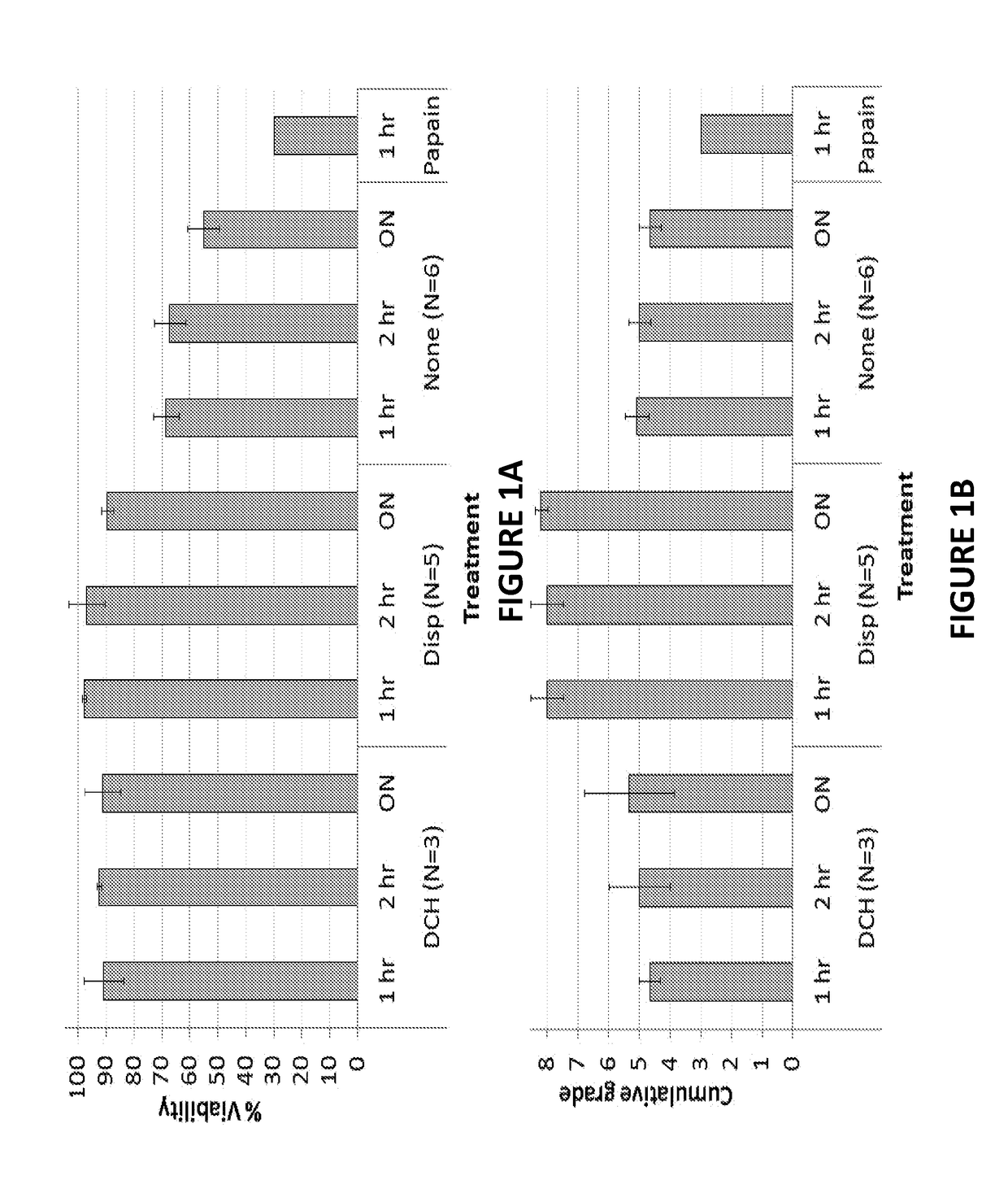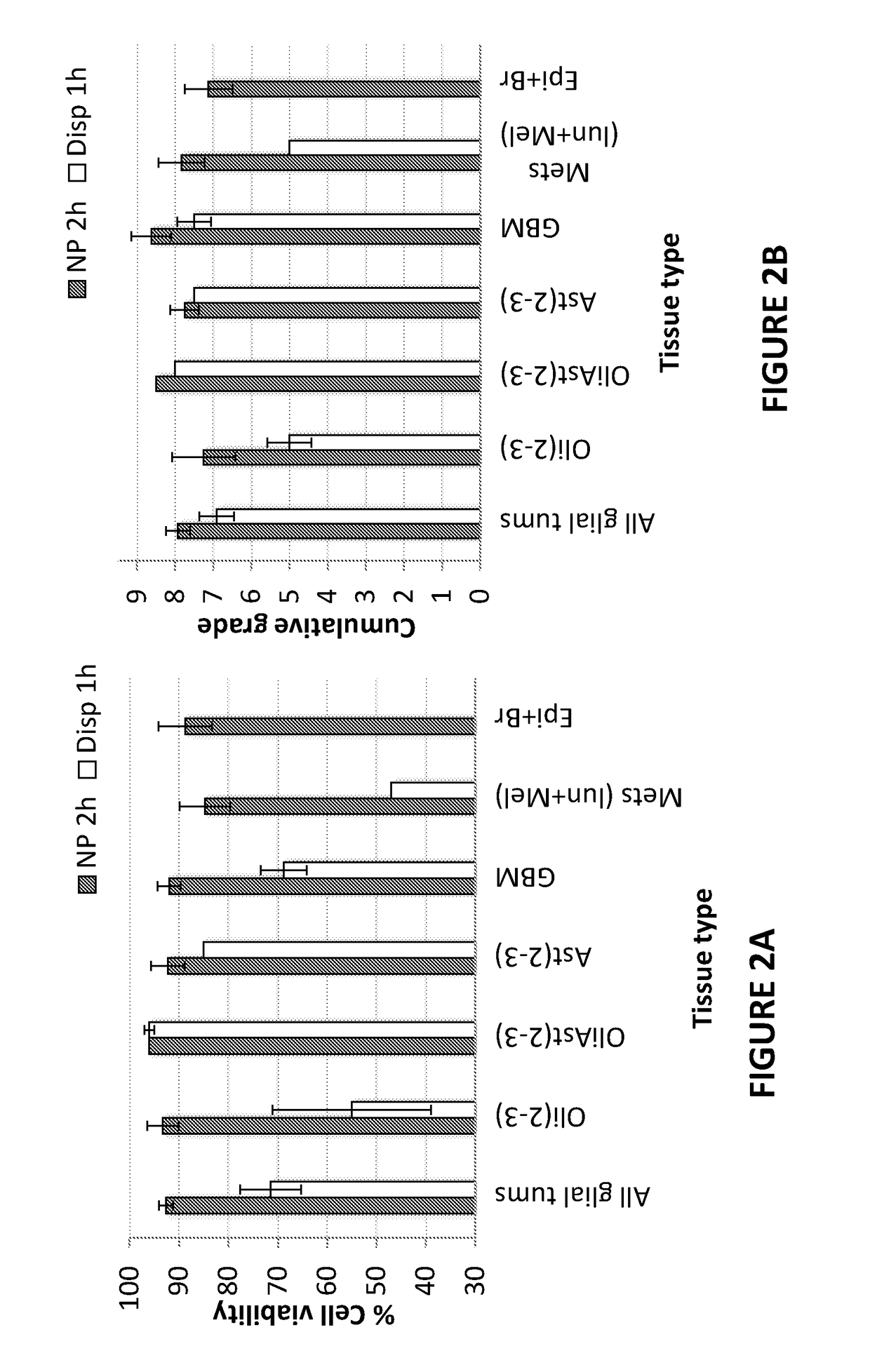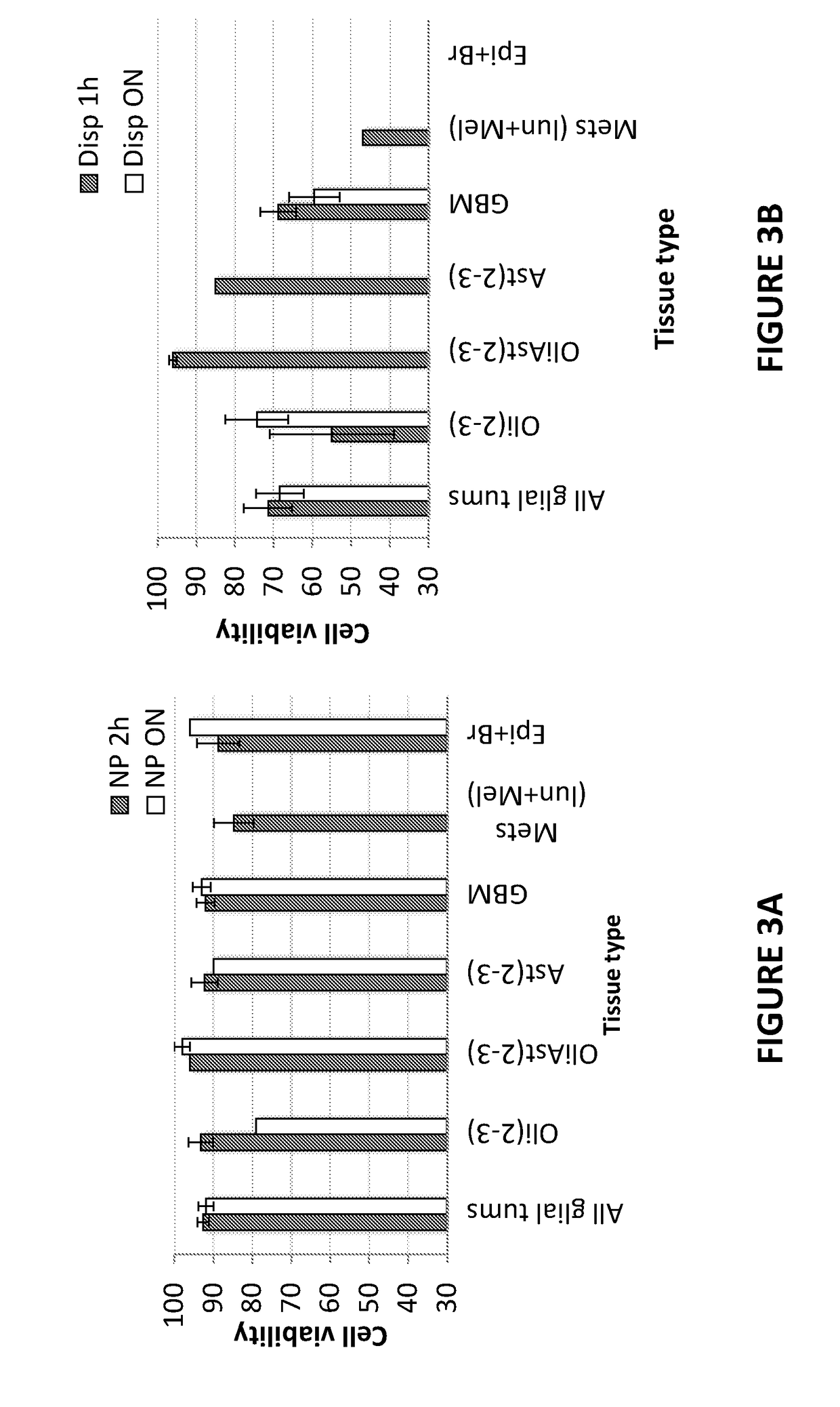Improved cytometric assays
a flow cytometric and assay technology, applied in the field of flow cytometric assays, can solve the problems of ineffective treatment of patients, insufficient standard patient management, and inability to accurately identify and characterization of various til populations, and achieve high accuracy and informative separation of cell populations, the effect of high accuracy and accurate identification and characterization
- Summary
- Abstract
- Description
- Claims
- Application Information
AI Technical Summary
Benefits of technology
Problems solved by technology
Method used
Image
Examples
example 1
Tissue Dissociation to Viable Single Cells
[0209]Freshly isolated brain tissue and brain tumor (BT) tissue, was transferred to the lab in saline or in Ringer lactate (Biological Industries, Beit HaEmek, Israel). The specimens were weighed following the removal of blood clots and necrotic areas. The cleansed tissue was cut into 1-2 mm pieces and resuspended in HBSS(+Ca +Mg) without phenol red (Biological Industries) at 100 mg tissue per ml. The tumor slurry was divided, 4 ml per 50 ml tube, to allow for complete trituration using a 5 ml Pasteur pipette.
[0210]The following enzymes or their combination were tested on the tumor slurry:
1. DNase-I (Sigma St. Louis, Mo., USA): DNase is an endonuclease used to reduce viscosity (‘gooeyness’) resulting from DNA released from dead cells. 2. Collagenase type IV from Clostridium histolyticum (Ch; Sigma): a metalloprotease that cleaves native triple-helical collagen. 3. Papain from papaya latex (Sigma): a relatively nonspecific protease. 4. Hyalur...
example 2
s for Panel Construction
[0225]The following tables depict exemplary antibodies useful in construction of panels.
TABLE 3antibody characteristicsAntibody target andCloneFluorophorenameIsotypeCompanyAlexa Fluor 488-CD11bICRF44Mouse IgG1 kBiolegendPE-CY5.5-CD33WM53Mouse IgG1AbcamAPC eFlour780- HLA-DRLN3Mouse IgG2b keBiosciencePac-Bl-CD14M5E2Mouse IgG2a kBiolegendQD655-CD14TuK4Mouse IgG2a kInvitrogenPE-CD86IT2.2Mouse IgG2b kBiolegendPerCP-Cy5.5-CD163G8Mouse IgG1 kBiolegendPE-Cy7-CDlcL161Mouse IgG1 kBiolegendFITC-CD303AC144Mouse IgG1 kMilteniBiotecPE-CD141AD5-Mouse IgG1 kMilteni14H12BioteceFluor 780-CD3SK7Mouse IgG1 keBioscienceAPC-CD452D1Mouse IgG1 kBiolegendPE-Cy5.5-CD4S3.5Mouse IgG2a kInvitrogenNC650-CD8RPA-T8Mouse IgG1 keBiosciencePE-V-alpha24J6B11Mouse IgG1 keBiosciencePac-Bl-CD3OKT3Mouse IgG2a kBiolegendPac-Bl-CD56MEM-Mouse IgG2a kBiolegend188Pac-bl CD19HIB19Mouse IgG1 kBiolegendAlexa Fluor 647-GFAP1B4Mouse IgG2b kBDPE-A2B5105-Mouse IgMMiltenyiHB29biotecIL-13Ra2 (Primary)N / AGoat IgG...
example 3
g Cytometric Assays for Tumor Infiltrating Leukocytes (TIL)
[0226]Three multicolor (7-8 color) staining panels were developed, identifying all prominent immune subsets within human brain tumors. The constructed lymphocytic, innate and DC staining panels target only cell surface markers, thus enabling live sorting of the identified cells.
[0227]Lymphocytic Panel
[0228]The first lymphocytic panel monitored the following markers: CD3, CD4, CD8, CD56, TcR-Vα24Jα18, CD45, CD11b, and a dump channel removing on the same fluorescent channel, dead cells-using a viability dye (ViViD) and unwarranted cells—CD14+ monocytes / macrophages, CD19+ / 20+ B cells, and CD66b+ granulocytes (see Table 4). As can be seen in FIG. 5A, the panel identified cytotoxic T lymphocytes—CTLs (3+8+4−56−DUMP−), Helper T cells—Th (3+4+8−56−DUMP−), CD56+ NK cells (3−4−8+ / −56+ DUMP−) and NK-T cells (3+4+ / −8+ / −56+Vα24+ / − DUMP−) of 3 subtypes (Type1—iNKT:Vα24Jα18+CD4+ or CD4−CD8-, and Type 2-NKT lacking the Vα24 Jα18 TcR).
[0229...
PUM
 Login to View More
Login to View More Abstract
Description
Claims
Application Information
 Login to View More
Login to View More - R&D
- Intellectual Property
- Life Sciences
- Materials
- Tech Scout
- Unparalleled Data Quality
- Higher Quality Content
- 60% Fewer Hallucinations
Browse by: Latest US Patents, China's latest patents, Technical Efficacy Thesaurus, Application Domain, Technology Topic, Popular Technical Reports.
© 2025 PatSnap. All rights reserved.Legal|Privacy policy|Modern Slavery Act Transparency Statement|Sitemap|About US| Contact US: help@patsnap.com



